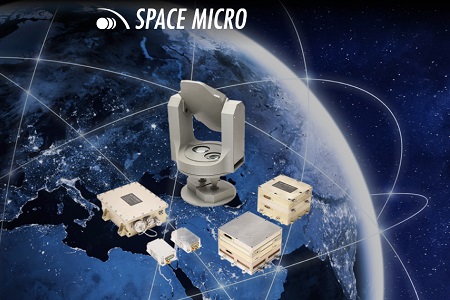 The United States Air Force (USAF) AFWERX programme has awarded Space Micro a contract to develop an air-to-space laser communications system.
The United States Air Force (USAF) AFWERX programme has awarded Space Micro a contract to develop an air-to-space laser communications system.
Space Micro, owned by Voyager Space, offers commercial laser communications products that address air-to-space laser communications problems, primarily caused by the instability of Earth’s atmosphere.
Space Micro’s laser communications products have been developed for commercial and government customers and are now evolving into a key solution for highly directional, long-distance, high-bandwidth telecommunications for air-to-space connective applications.
In routine air-to-space laser communication, atmospheric turbulence scrambles transmitted information. To help solve this problem, Space Micro partnered with Rhea Space Activity (RSA) and Johns Hopkins University (JHU) to develop an adaptive optics solution that uses deformable mirrors to transmit a laser signal through turbulence unhindered. The project, called Deformo, seeks to develop an Air-to-Space Laser Communications Pod that could be deployed on a variety of USAF aircraft.
To develop Deformo, Space Micro partnered with RSA to use its deep-space autonomous navigation capability, the Jervis Autonomy Module (JAM), to ensure USAF spacecraft can autonomously and accurately communicate with USAF aircraft. Additionally, Space Micro partnered with JHU to use a patented dual-adaptive mirror technology that effectively cancels out the uncertainties of the physics of Earth’s atmosphere.
Dave Strobel, executive chair of Space Micro, said: “This Phase I effort will provide the necessary feedback to develop the scientific and engineering infrastructure needed to provide an optical communication chain between airborne assets and geostationary communications satellites. Deformo is intended to give our stealth aircraft the ability to securely communicate during sensitive operations without giving away their positions.”
Shawn Usman, astrophysicist and founder of RSA, commented on the importance of using adaptive optics to support air-to-space communications. “RSA is excited to apply our expertise in developing an adaptive optics-based air-to-space communications capability. Such adaptive optics have already transformed the way we build telescopes and explore the universe. We are now bringing this same technology to the forefront of national security operations by allowing US stealth aircraft to maintain secure high-bandwidth communications during combat operations. RSA is well versed in developing adaptive optics systems to support US Department of Defense and Intelligence Community reconnaissance activities.”
Dr Laurent Pueyo, Project Scientist for Advanced Technologies at the Space Telescope Institute and Associate Research Scientist at JHU, stated: “We have developed adaptive optics solutions for a variety of future NASA missions, including the Roman Space Telescope. We are excited to develop adaptive optics systems to help solve the interesting physics problem of air-to-space communications.”
Space Micro and the team will now have an opportunity to participate in customer discovery with key USAF and United States Space Force (USSF) stakeholders. Space Micro also plans to demonstrate how such a new capability will fit into current US defence practices, as well as the broader US space environment.














Add Comment